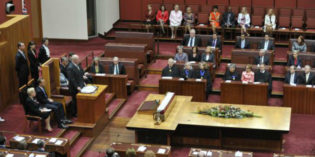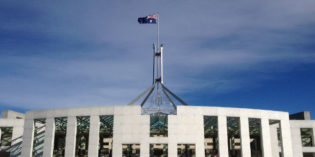Australia

Australian politics shows why the de-separation of political and administrative careers matters for democracy
One cornerstone of executive politics in established liberal democracies has long been a system for controlling government corruption and malfeasance that separates out clear roles for the changing elite of elected politicians and their advisers, and the permanent administrators running the civil service. Yet in Australia Keith Dowding and Marija Taflaga find that the growing role of special advisers, plus increased mobility from adviser roles into career public-service pathways, is now an integral factor in the re-emergence of substantial ministerial scandals.

Evidence from Australia: women are under-represented in senior political appointments, and this affects the representation of women in parliament
Political advisers can help shape public policy. They are also often the politicians of the future, so it matters who they are. Using a unique data resource from Australia, Marija Taflaga and Matthew Kerby tracked men’s and women’s differing career trajectories in Australian government over time, and found that men were more likely to reach senior levels, and then more likely to enter parliament.

Economic voting and party positions: when and how wealth matters for the vote
Does the ownership of economic assets matter for how people vote? Drawing on new research, Timothy Hellwig and Ian McAllister find the answer is yes. They argue that by changing their policy positions, parties can shape the influence of asset ownership on voter decisions, if there is sufficient party polarisation.

Partisanship and the gender gap: support for gender quotas in Australia
The disparity in the gender gap in parliament between the Australian Labor Party and Liberal Party has grown over time. Katrine Beauregard assesses what measures to increase the representation of women in parliament the public – and political partisans – would support.

Does it really matter if we call Australian politics ‘semi-parliamentary’?
Australia’s ‘hybrid’ executive-legislative relationship, whereby the two chambers of parliament have distinct and separate powers, has been described in numerous ways, including ‘semi-parliamentarism’. In this, the final of three pieces on the subject, Marija Taflaga argues that the terminology matters, and the term helps both politicians and political scientists clarify how the Australian system works, and understand the political incentives and behaviours it produces.

The development of semi-parliamentarism in Australia
Steffen Ganghof has described the Australian system at both national and state levels as ‘semi-parliamentarian’ since governments do not need to maintain the confidence of the upper chambers to survive. Rodney Smith traces how Australia’s upper houses have evolved and established distinct, strengthened mechanisms of executive scrutiny.

Semi-parliamentary government, in Australia and beyond
Australia has developed a unique semi-parliamentary system of government, writes Steffen Ganghof, which assigns different functions to the two equally legitimate but differently constituted houses of parliament. While not an ideal system, it offers an under-appreciated alternative to competing models of presidential and parliamentary democracy.


 Democratic Audit's core funding is provided by the Joseph Rowntree Charitable Trust. Additional funding is provided by the London School of Economics.
Democratic Audit's core funding is provided by the Joseph Rowntree Charitable Trust. Additional funding is provided by the London School of Economics.